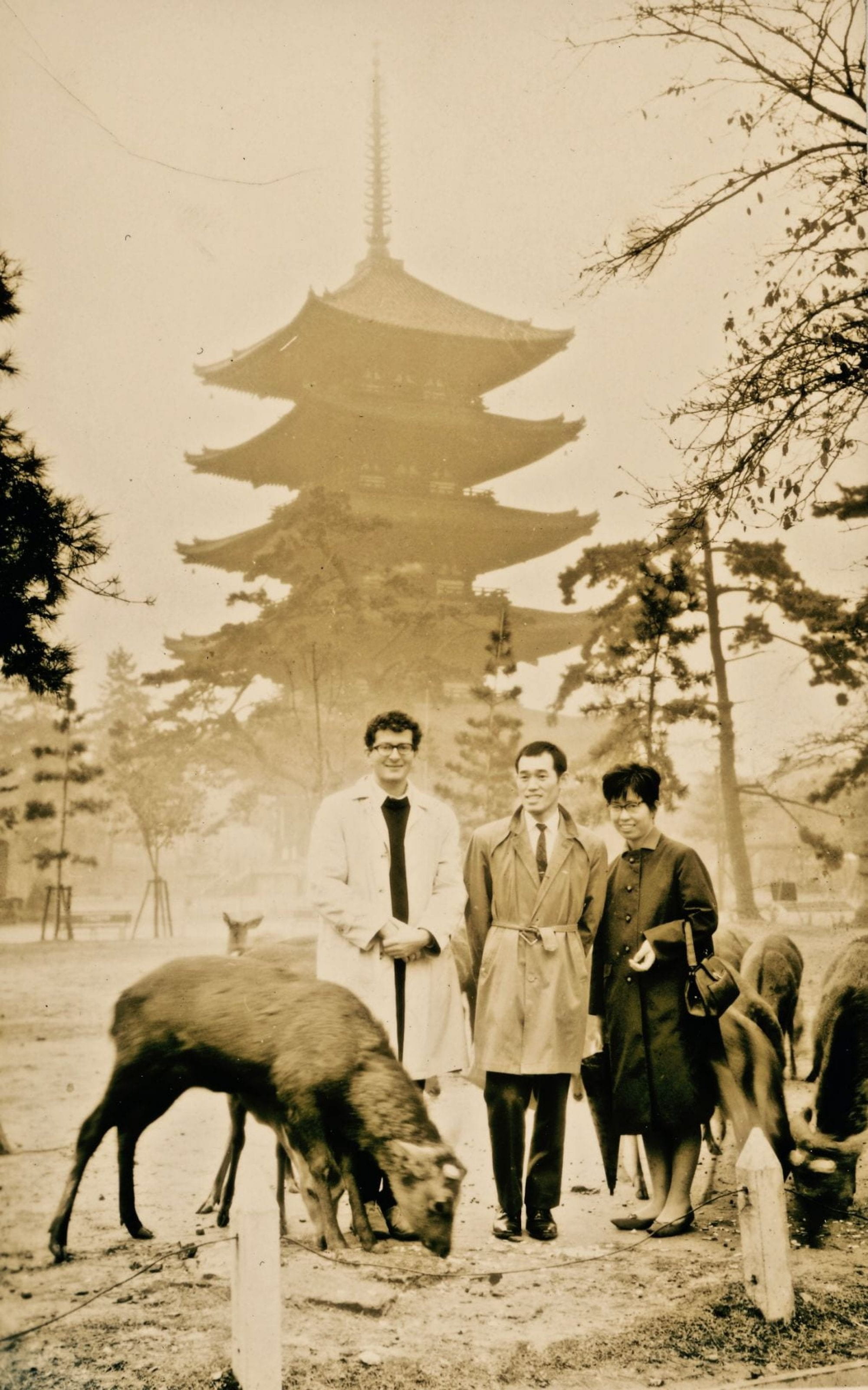Artist: Kawamura Bunpō 河村文鳳 (1779 – 1821)
Title: 文鳳山水画譜 (Bunpō’s album of landscape paintings)
Date: Bunsei 7 (1824)
Medium: Woodblock print; ink and color on paper; paper cover.
Gift of Arthur Tress, Arthur Tress Collection Box 55, Item 20 (https://franklin.library.upenn.edu/catalog/FRANKLIN_9977502846003681)
Kawamura Bunpō 河村文鳳 (1779-1821) was a Japanese landscape painter of the late Edo Period, born in Yamashiro Province, in modern day Kyoto Prefecture. He was best known for his illustrations of Chinese style landscapes (sansui), as can be seen in other published works such as Bunpō gafu (1807). He was a student of the artist Ganku 岸駒 (1756-1839) According to a postscript in the book by Bunpō’s student Kawamura Kihō (1778–1852) Bunpō sansui gafu was compiled at the request of Bunpō’s publisher Yoshidaya Shinbē.[1] The work, which consists of thirty pages of landscapes of Chinese settings, also includes quotidian scenes of daily work and life as well as poems by the poet Rai San’yō. Fellow artist Tanomura Chikuden once praised Bunpō’s fluid lines and ability to draw human figures, while his landscape paintings are known for their use of heavy brush strokes and thick contours.
Bunpō sansui gafu shows a variety of Chinese landscape paintings, and the renderings of his brush lines to provide contour and depth is striking. Human figures are generally marginal or de-emphasized in the composition; when they do it appear, it is usually figures at work, leading horses or ox, riding down rivers on boats, or simply walking in pairs or alone down winding paths or snowy landscapes. Both summer and winter are depicted in the series, and scenes of towns covered in snow exemplify Bunpō’s dramatic use of dark contours and color. These elements are particularly notable in the British Museum’s copy of the work, which preserves the striking color contrasts and sharp lines characteristic of the art.
Ellis Tinios links Bunpō’s interest in a variety of styles of art, particularly Chinese style painting, to the artistic and literary conventions of early nineteenth-century Kyoto, in which a variety of influences were available. According to him, Bunpō was himself perceived as an unusually eclectic artist, with an 1850 account stating that “took from all schools to develop his own unique style.”[2] He had a wide variety of associates, including the writer Ueda Akinari (1734-1809) and the Confucian scholar and poet Rai San’yō (1780-1831). Alongside his landscape, Bunpō was known for his artistic compositions that were didactic in intent (gafu) and for readers interested in painting and composition. While Bunpō is not as well known today as similar landscape artists of his period, his versatility in a wide variety of artistic genres and styles and ability to move between different conventions can still be seen in his work.
Other information on this copy: The book has information possibly identifying the previous owner that says “Mikawa Province, Hazu-gun, Nishio Han, Tokuda Jirō, Dental Specialist” (三河幡豆郡西尾藩 徳田次郎歯専).
Citations
Ellis Tinios. Kawamura Bumpō: Artist of Two Worlds. Leeds, U.K: University Gallery Leeds, 2004.
Kobayashi Tadashi and Jun’ichi Ōkubo 小林忠 大久保純一. Ukiyo-e no kanshō kihon chishiki 浮世 絵の鑑賞基礎知識[The fundamentals of appreciating Ukiyo-E] Tokyo: Shibundo, 1994.
Other Collections
Pulverer Collection. Bunpō sansui gafu 文鳳山水画譜, Accession no. FSC-GR-780.284, https://pulverer.si.edu/node/421/title/1
Metropolitan Museum of Art. Bunpō sansui gafu 文鳳山水画譜, Accession no. 2013.662, https://www.metmuseum.org/art/collection/search/78583?searchField=All&sortBy=Relevance&ft=Kawamura+Bunp%c5%8d&offset=0&rpp=20&pos=1
British Museum of Art Bunpō sansui gafu 文鳳山水画譜, no. 1959,0509,0.6.2 https://www.britishmuseum.org/collection/object/A_1959-0509-0-6-2
[1] Ellis Tinios. Bunpō sansui gafu 文鳳山水画譜, FSC-GR-780.284 https://pulverer.si.edu/node/421/title/1
[2] Ellis Tinios. Kawamura Bumpō: Artist of Two Worlds. (Leeds UK: University Gallery Leeds, 2004): 10.
